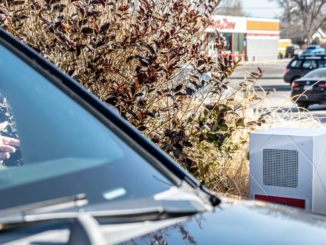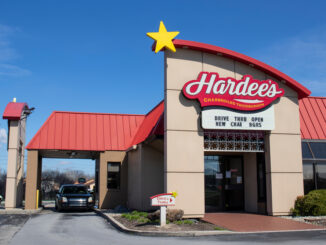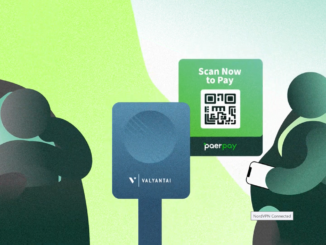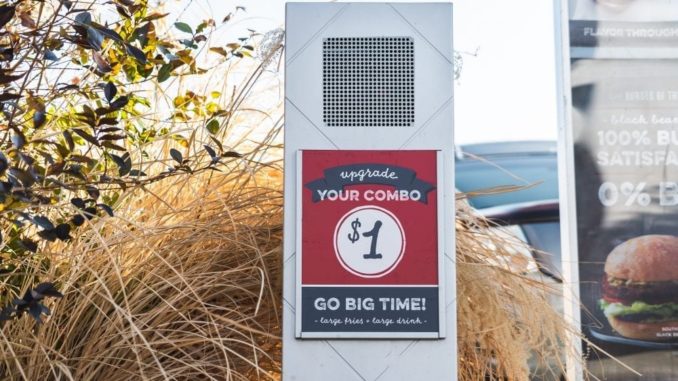
By Alisha Goldberg, Assistant Editor
“May I take your order?” asks the AI platform. A quick service drive thru restaurant in Denver, Colorado, Good Times Burgers & Frozen Custard, is proving that a small restaurant can advance the frontier on next-generation restaurant technologies just as well as any of the major chains. In fact, it appears that Good Times will down in the annals of restaurant technology history as the first eatery to deploy an AI-enabled voice-activated order taker.
For customers, the process is simple, and that’s the whole idea. They pull their cars up to the speaker system to place their order just as they would normally. But instead of talking to a human on the other end, they talk to an AI-enabled chatbot. The technology is not unlike voice assistant devices like Google Home, Alexa and Siri to which we’re all accustomed. This system, however, is specially engineered to handle the types of conversations that take place in the context of a drive thru restaurant and to automatically send menu orders to the kitchen according to those conversations.
Valyant AI is the Colorado-based technology solution provider behind the new technology, which is being called the world’s first conversational AI platform for the quick serve restaurant industry. By its own account, the company toiled in secret for two years to develop the new technology before it went live a couple months ago at Good Times.
The technology, which includes custom-built hardware, is specifically designed for high-volume, fast food restaurants. It was programmed using actual customer recordings. Thanks to machine learning, the system is now being refined with live customer orders and becoming smarter and more accurate by the day.
Of course, the system requires a significantly smaller set of keywords to take meal orders than a general purpose voice assistant that requires an enormous vocabulary and a knowledge base that contains virtually everything under the sun. The platform integrates with existing drive thru hardware and on-premise or cloud-based POS systems, which, in turn, can integrate with all other restaurant management systems.
The primary aim of the initiative is to streamline the food ordering process, improve employee efficiency, and serve more customers more quickly, driving top-line revenue growth. The technology addresses the labor shortages that invariably occur during peak times of the day. Needless to say, time is of the essence in a drive-thru environment. A long line usually translates into loss revenue as prospective customers look for an alternative restaurant.
In fact, upwards of 75% of a typical quick serve restaurant’s revenue is generated from customers in the drive thru line. According to recent studies, the amount of time between the customer placing an order and receiving it at the pick-up window has significantly increased in recent years, largely due to labor shortages. Fast food restaurants are increasingly struggling to find and retain employees who want these jobs, and customers are paying the price. One study puts the average wait time in the drive thru line at 234 seconds, nearly double what it was 15 years ago.
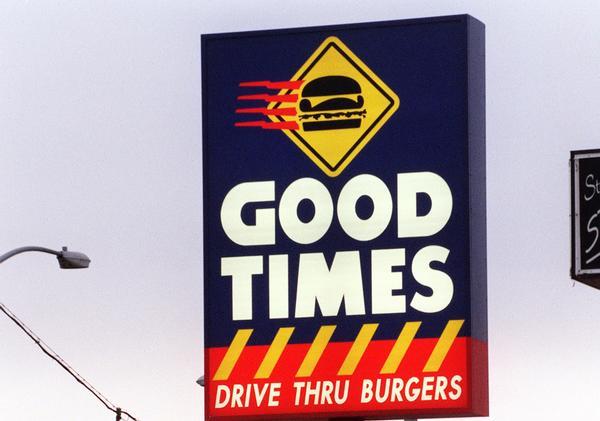
By improving ordering accuracy and decreasing wait times between food ordering and pickup, the new system has been shown to improve customer satisfaction. According to preliminary reports, the new technology has resulted in a 50 percent reduction in wait time for customers during high-traffic periods.
The customer experience has been nothing but positive, according to a company spokesperson. The ordering process begins when a sensor located under a customer’s car is triggered. The technology initiates a voice greeting that welcomes the customer to the restaurant while also disclosing the fact that their order is being taken not by a human but by an AI-enabled assistant. No doubt, most people find the experience to be amusing. The flow of the conversation is unstructured and conversational, to the point that customers might not have even noticed that they were talking to a machine.
Accuracy is extremely high, according to the company. Currently, during this trial period, the system only taking breakfast orders and only at one of Good Times’ several restaurant locations. If a customer does not provide a complete order, the systems will ask for clarification and then read back the order. For now, to guarantee accuracy before sending customers down the line, the system employs “human-in-the-loop” on all orders. Better safe than sorry when it comes to getting the order right.
With the quick serve restaurant industry moving quickly toward automation, from self-serve kiosks and payment systems to robots that prepare the meals to self-cleaning systems, it seems only a matter of time before AI-enabled voice-activated order takers become the norm. And now this small restaurant in Denver has proven that it can be done.


